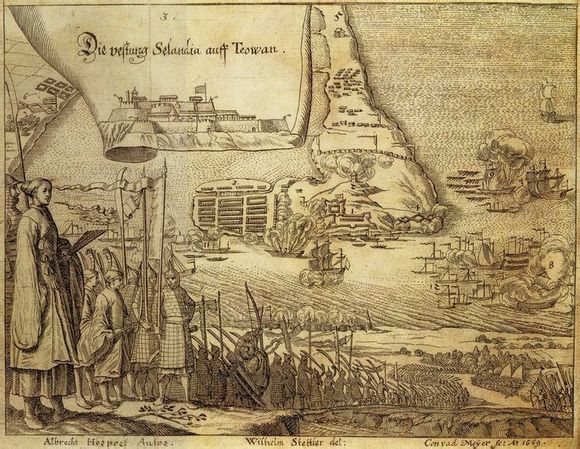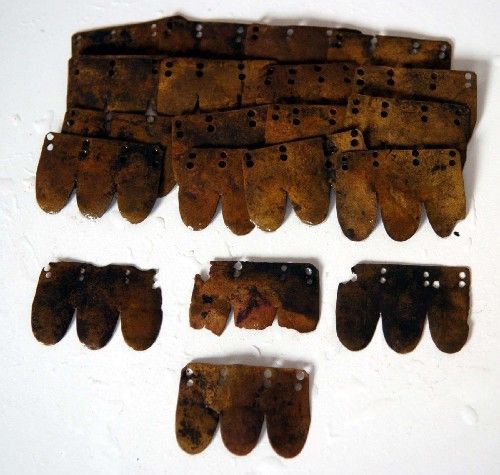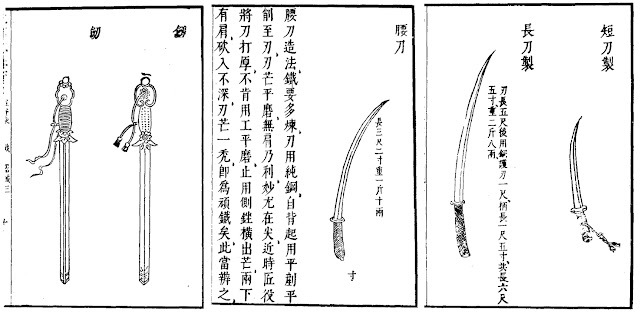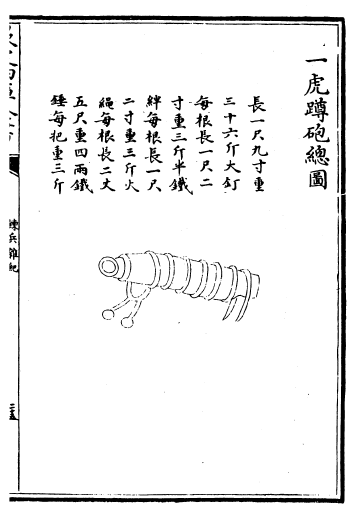 |
| Aftermath of the Siege of Fort Zeelandia, depicting Chinese troops wearing heavy lamellar armour, possibly Tie Ren. Artwork taken from 'Reise nach Java, Formosa, Vorder-Indien und Ceylon' by Albrecht Herport, an artist, soldier of VOC, and witness of the battle. |
Tie Ren (鐵人 or 銕人, lit. 'Iron man') were a type of elite heavy infantry that served the legendary Zheng Cheng Gong (鄭成功), known to the West as
Koxinga. They were amongst the finest troops Ming loyalists had to offer. Formally known as
Wu Wei Zhen (武衛鎮, lit. 'Martial Guard Garrison') and
Hu Wei Zhen (虎衛鎮, lit. 'Tiger Guard Garrison'), the formation of Tie Ren was inspired directly by the heavily armoured cavalry of the Qing Dynasty.
Recruitment and training
Tie Ren were only recruited from the strongest men: one must be able to walk three laps around a training field while carrying a three to five hundred catty
stone lion (presumably in a manner not dissimilar to modern strongman's
stone carry) in order to be eligible for recruitment.
Once recruited, Tie Ren underwent rigorous military training to better prepare them for war. They drilled twice a day in full gear (albeit without wearing their masks, as metal mask can get extremely hot under the sun) with sandbags tied to their legs, and underwent performance assessment every other day, with a particular emphasis on archery.
Equipment
 |
| Fragmented iron scales salvaged from a sunken ship of Koxinga's fleet. |
Tie Ren famously wielded
Zhan Ma Dao (斬馬刀) as their weapon of choice. They were heavily armoured, wearing an iron helmet, an iron mask painted with terrifying visage, a possibly double-sided (i.e. iron plates wired to both sides of a heavy cotton garment)
armoured coat fastened with iron chains, an armoured skirt, armpit armours,
armguards and iron boots. Because Tie Ren often served as marines and participated in amphibious assault and boarding action, they often discarded lower limb armours and removed trousers and footwears for ease of movement.
 |
| A short, single-edged sword (highlighted) that exhibits many characteristics unique to Southeast Asian dha, such as the very long, rounded hilt and small guard. From 'Jing Guo Xiong Lue (《經國雄略》)', written by Zheng Da Yu (鄭大鬱), a contemporary of Koxinga and follower of Zheng Zhi Long (鄭芝龍), Koxinga's father. |
Other equipment of Koxinga's army (although not necessarily by Tie Ren themselves) included
bows and
arrows,
grenades,
rattan shields,
Ai Pai (挨牌),
Gun Bei (滾被),
spears and pikes, and a type of sword known as
Yun Nan Dao (雲南刀, lit. 'Yunnanese sabre'), presumably inspired by Southeast Asian
dha. They also used a type of weapon known as
Kuang (鋛) and
Ri Ben Kuang (日本鋛), which seems to refer to Japanese
yari (鑓).
Organisation and tactics
Tie Ren were organised into left and right Wu Wei Zhen, as well as left and right Hu Wei Zhen, which served a dual role of Koxinga's guards and crack troops. They numbered around three to five thousands initially, although subsequent recruitment increased this number to around ten thousands.
During battle, Tie Ren usually fought in mixed six-man squads consisted of two rattan shieldmen, two pikemen, two Tie Ren wielding Zhan Ma Dao as well as three supporting porters (although they were also armed with spears, they were not counted among the combatants). Each squad could be further divided into two three-man cells that operated independently. Sometimes, pikemen were omitted to include even more Tie Ren.
Every Tie Ren was also an archer. They were usually organised into archer contingent and close combat contingent with a ratio of 4:6.
Soldier par excellence
Such was the fearsome reputation of Tie Ren that they were highly respected by Koxinga's other troops and dreaded by their Manchu and Hollander enemies. They were known to be disciplined, fierce, and fearless to the point of recklessness, and demonstrated many impressive battlefield feats to back up this reputation. Tie Ren had withstood repeated cavalry charges by a superior number of Manchu heavy cavalry, utilised
smoke screen to
countercharge and defeat said cavalry, ignored seemingly delibilating arrow wounds, and weathered through severe Dutch bombardment without faltering. They were also noted for their skill in archery and ability to maintain good formation order by Dutch witnesses.
In spite of this fearlessness, Tie Ren were not headstrong nor suicidal. They were perfectly willing (and were disciplined enough to be able to) disengage and dive for cover when ordered, either to protect themselves from enemy gunfire, or to take advantage of fire support from nearby friendly artillery.
Nevertheless, while Tie Ren enjoyed prestigious position in Koxinga's army, they never completely shed their piratical roots, and would not hesitate to engage in pillage, rape and massacre when ordered.





